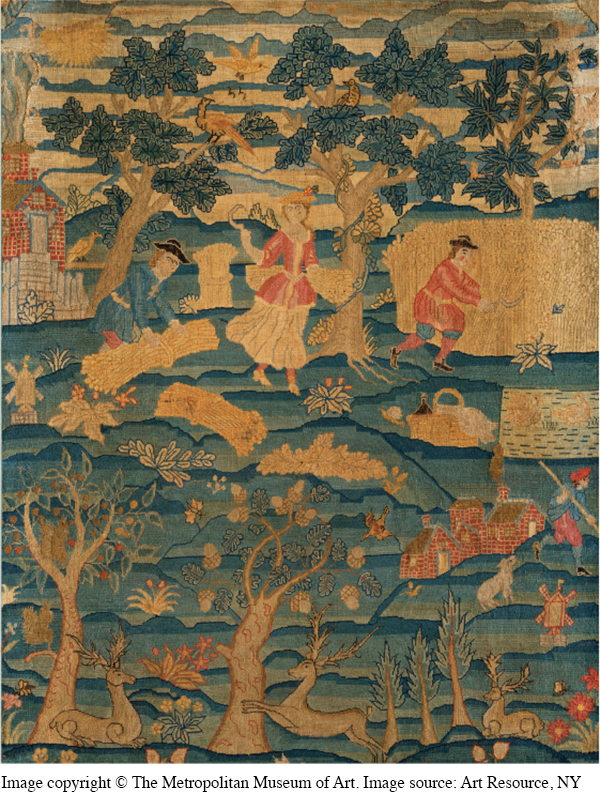Working Families
Still, for most colonial women and men, daily rounds of labor shaped their lives more powerfully than legal statutes or inheritance rights. Husbands and wives depended on each other to support the family. By the early eighteenth century, many colonial writers promoted the idea of marriage as a partnership, even if the wife remained the junior partner.

This concept of marriage as a partnership took practical form in communities across the colonies. In towns, the wives of artisans often learned aspects of their husband’s craft and assisted their husbands in a variety of ways. Given the overlap between homes and workplaces in the eighteenth century, women often cared for apprentices, journeymen, and laborers as well as their own children. Husbands meanwhile labored alongside their subordinates and represented their families’ interests to the larger community. Both spouses were expected to provide models of godliness and to encourage prayer and regular church attendance among household members.
On farms, where the vast majority of colonists lived, women and men played crucial if distinct roles. In general, wives and daughters labored inside the home as well as in the surrounding yard with its kitchen garden, milk house, chicken coop, dairy, or washhouse. Husbands and sons worked the fields, kept the livestock, and managed the orchards. Many families supplemented their own labor with that of servants, slaves, or hired field hands. And surplus crops and manufactured goods such as cloth or sausage were exchanged with neighbors or sold at market, creating an economic network of small producers.
Indeed, in the late seventeenth and early eighteenth centuries, many farm families in long-settled areas participated in a household mode of production. Men lent each other tools and draft animals and shared grazing land, while women gathered to spin, sew, and quilt. Individuals with special skills like midwifery or blacksmithing assisted neighbors, adding farm produce or credit to the family ledger. One woman’s cheese might be bartered for another woman’s jam. A family that owned the necessary equipment might brew barley and malt into beer, while a neighbor with a loom would turn yarn into cloth. The system of exchange, managed largely through barter, allowed individual households to function even as they became more specialized in what they produced. Whatever cash was obtained could be used to buy sugar, tea, and other imported goods.
Exploring American HistoriesPrinted Page 110
Exploring American Histories Value EditionPrinted Page 84
Chapter Timeline